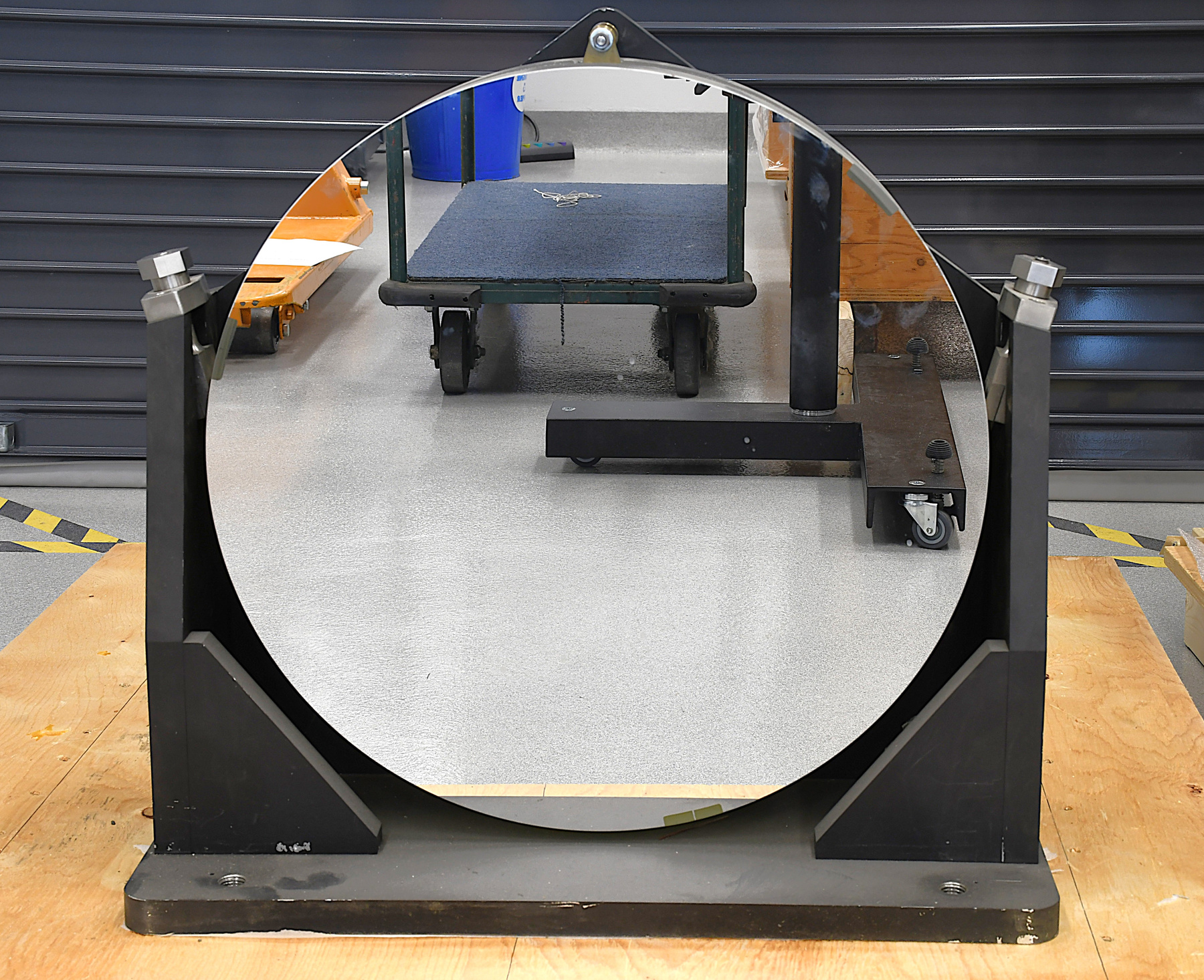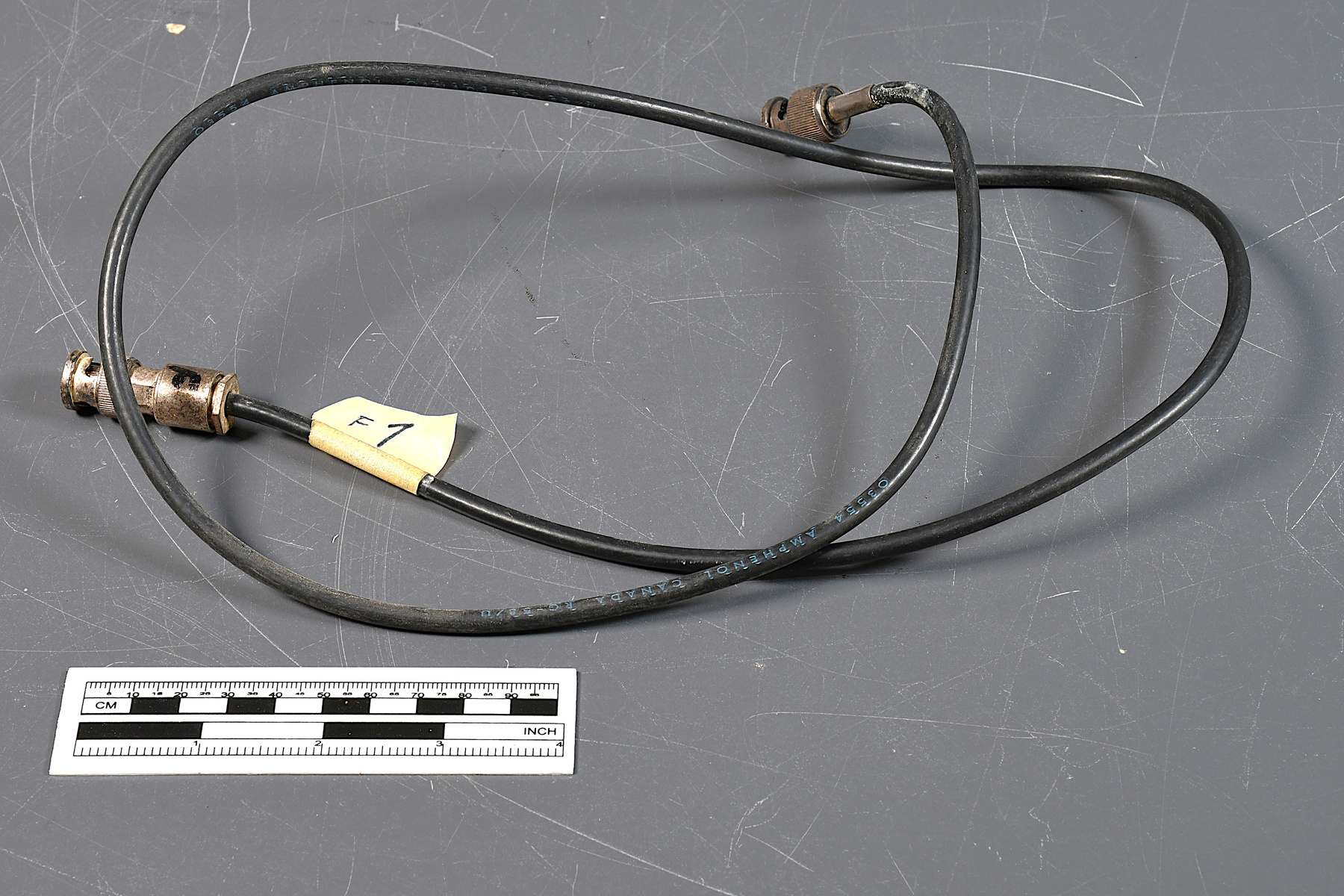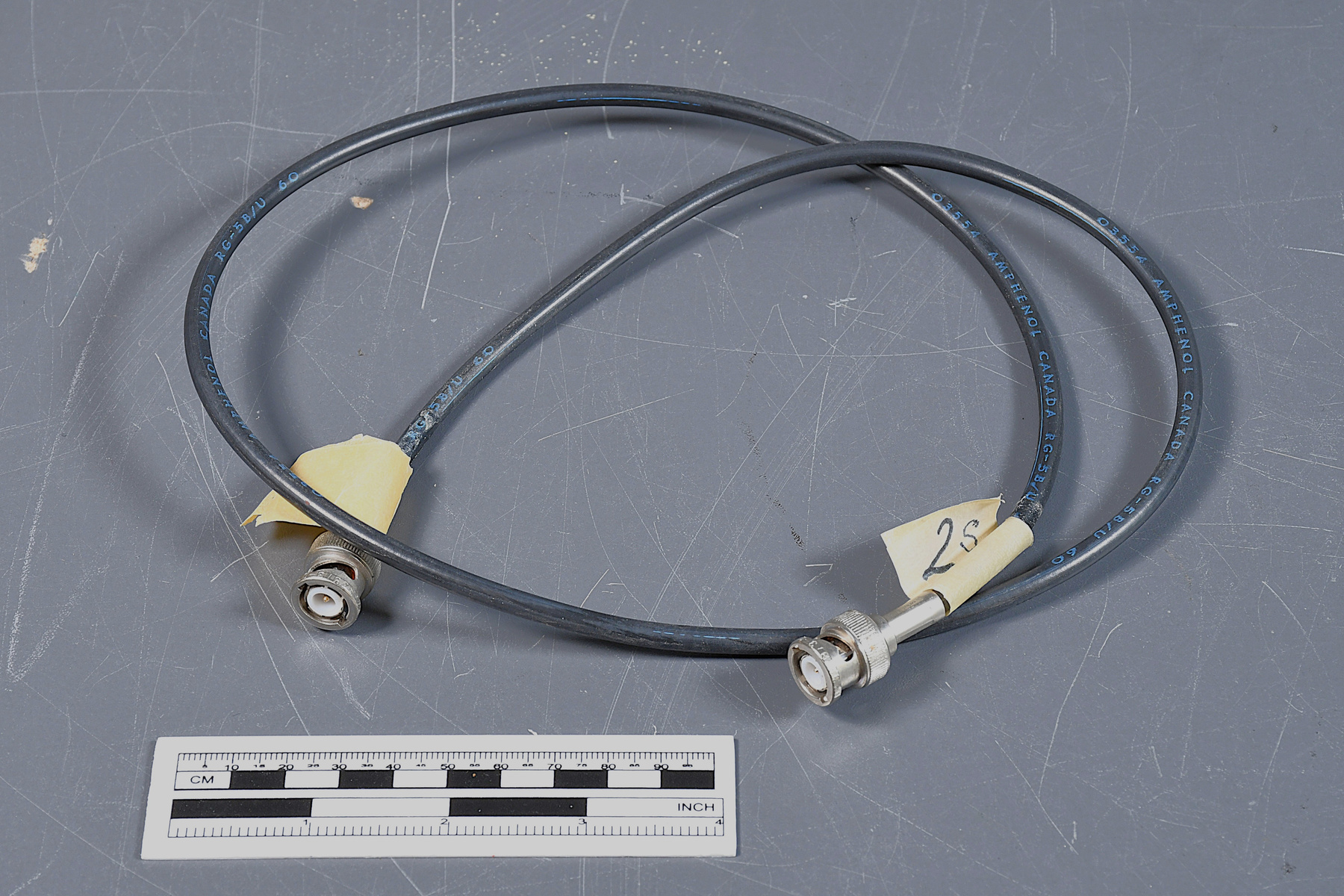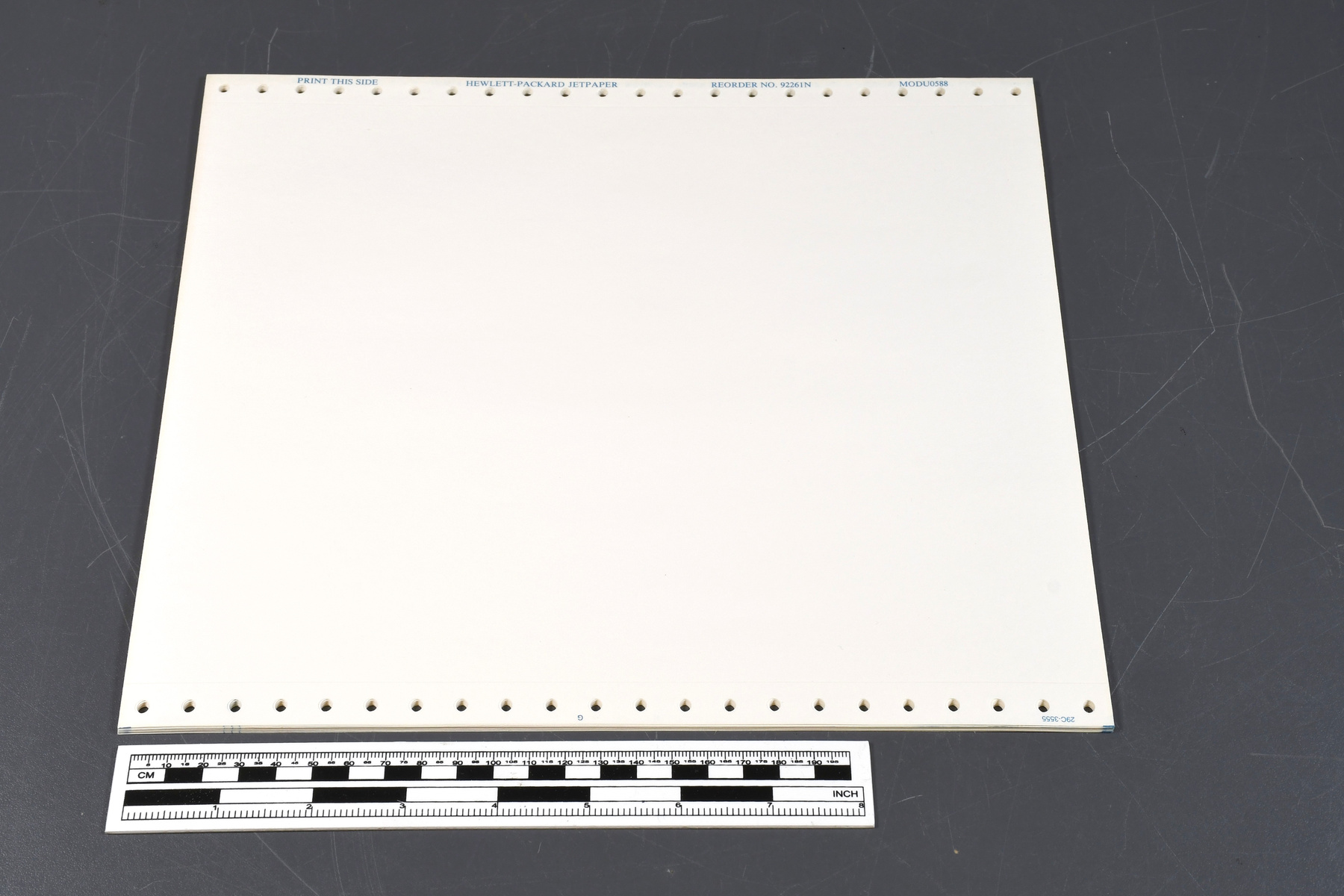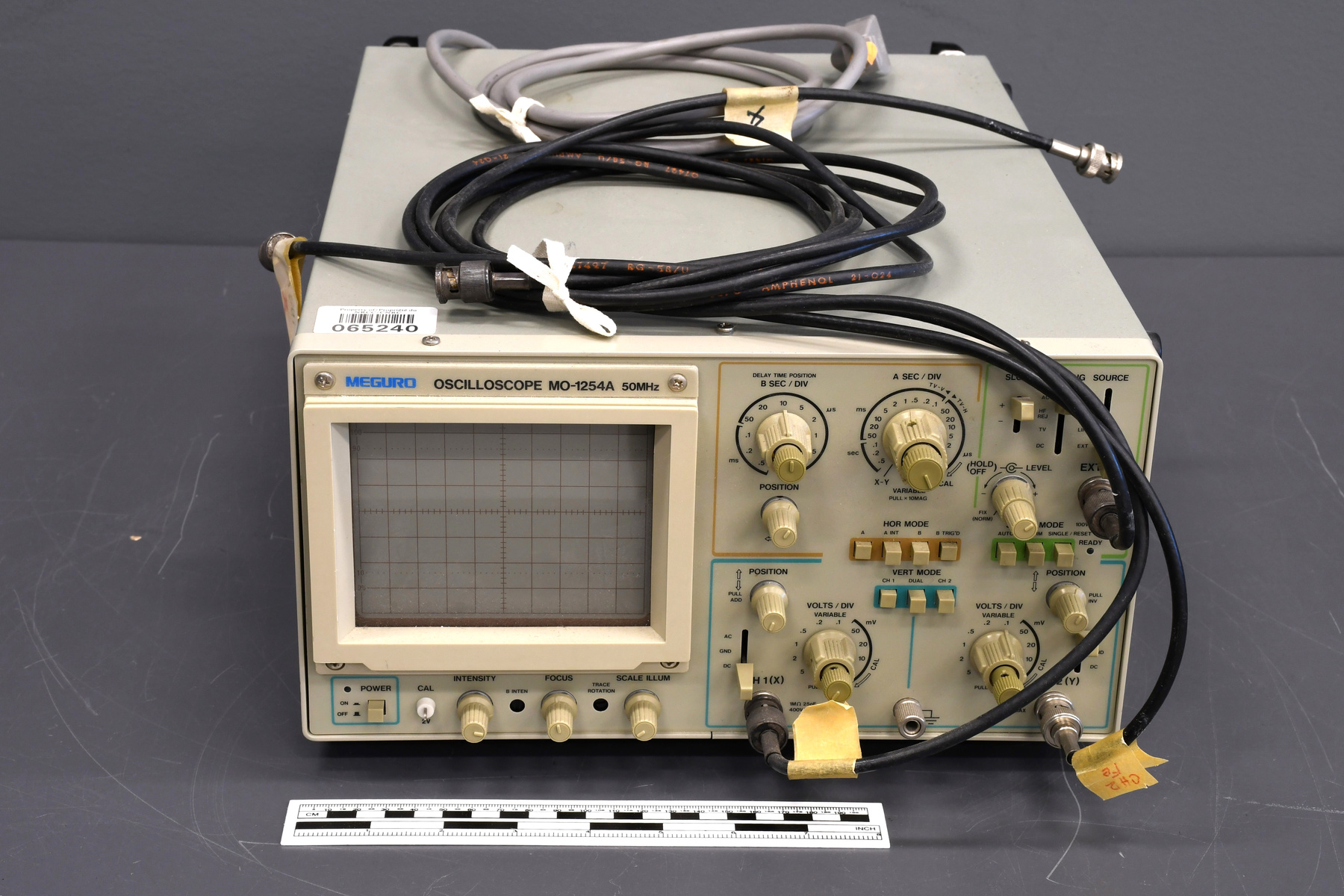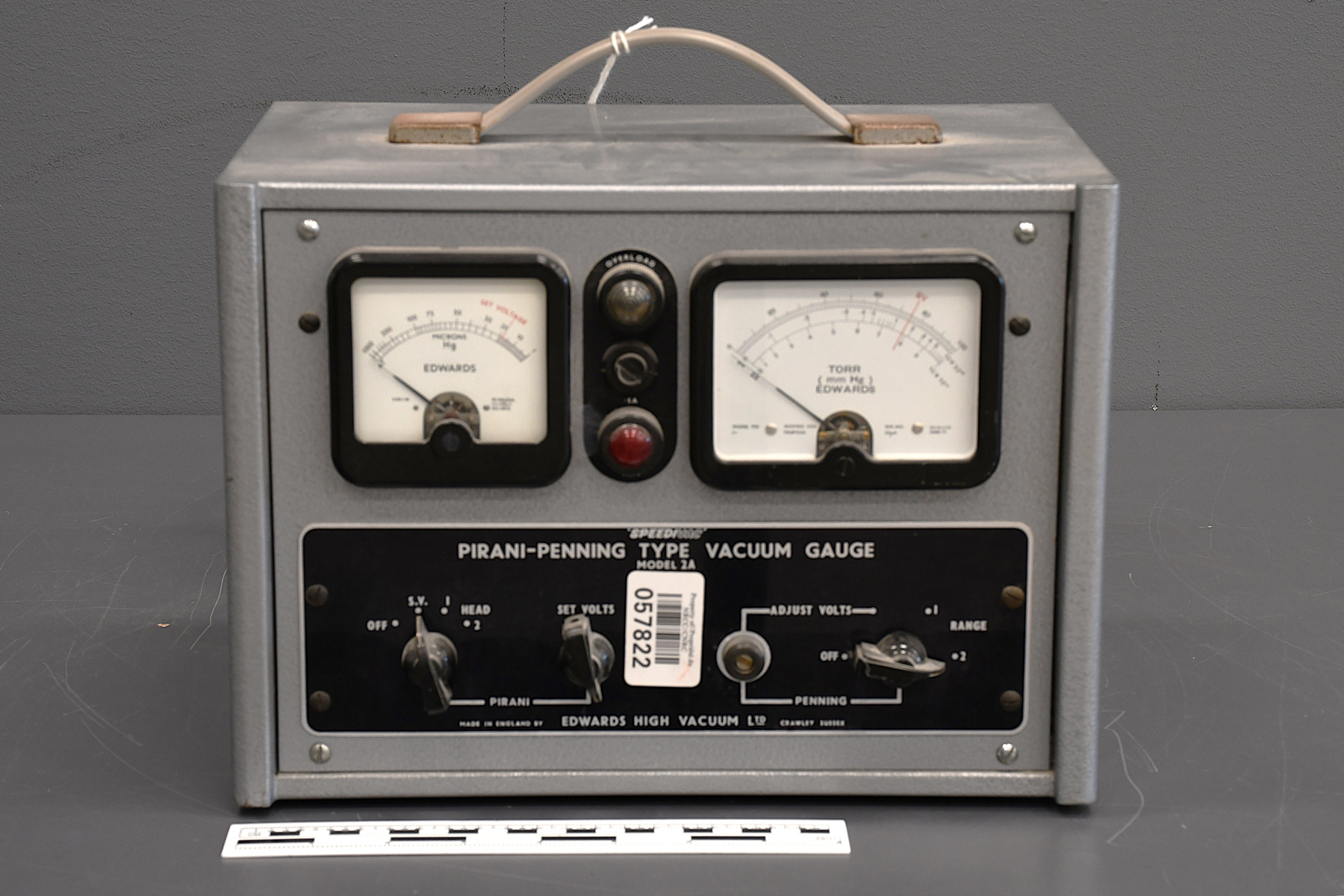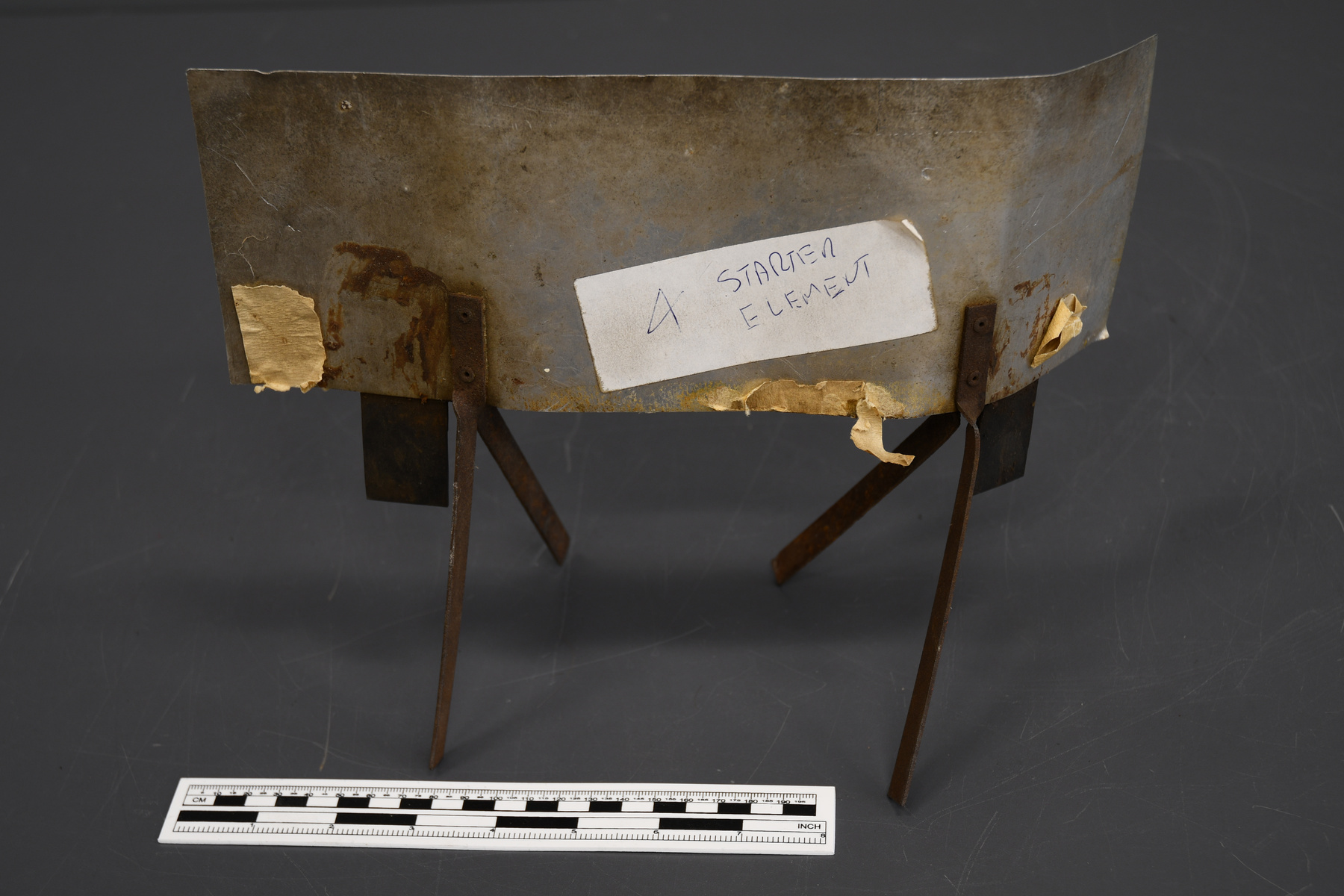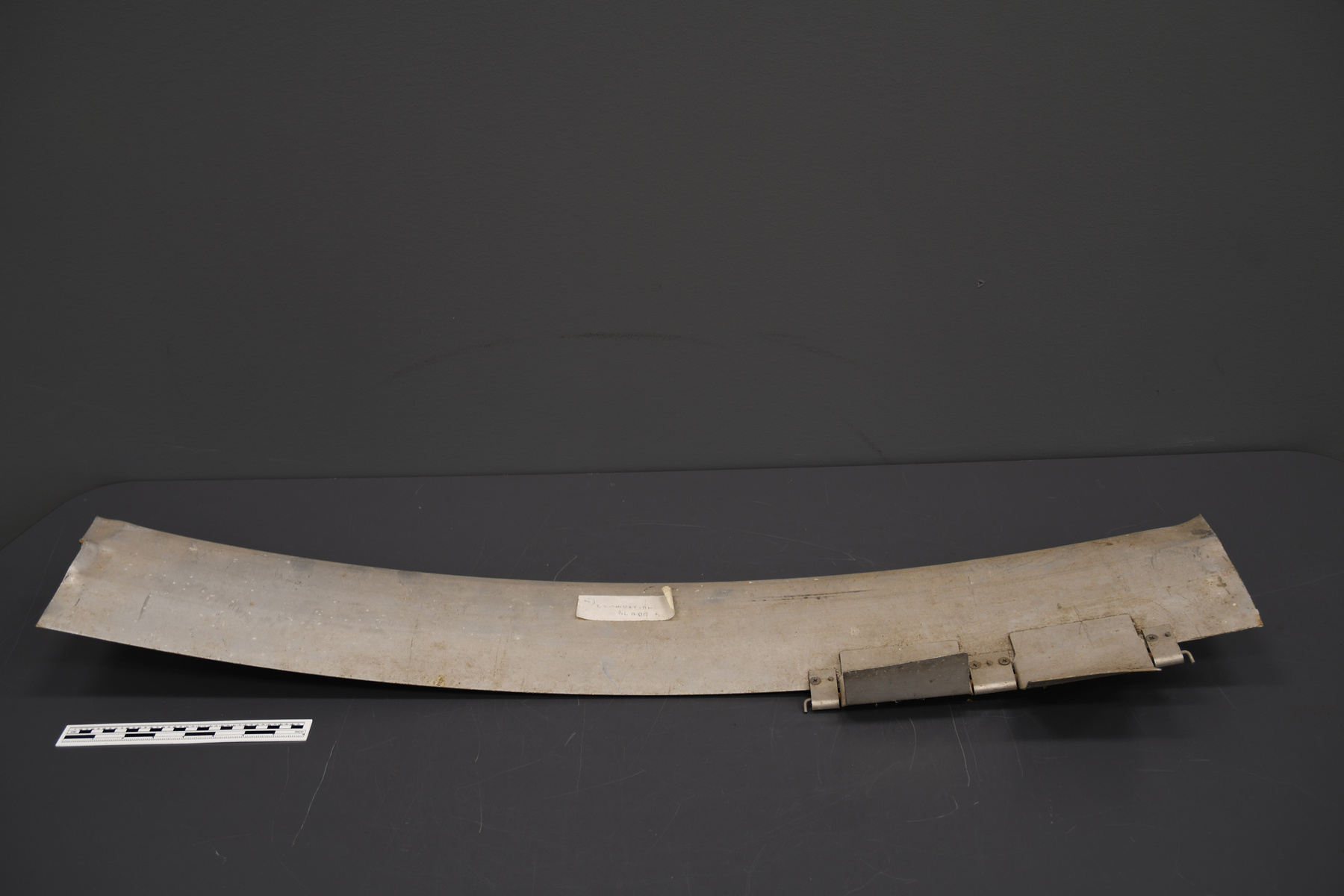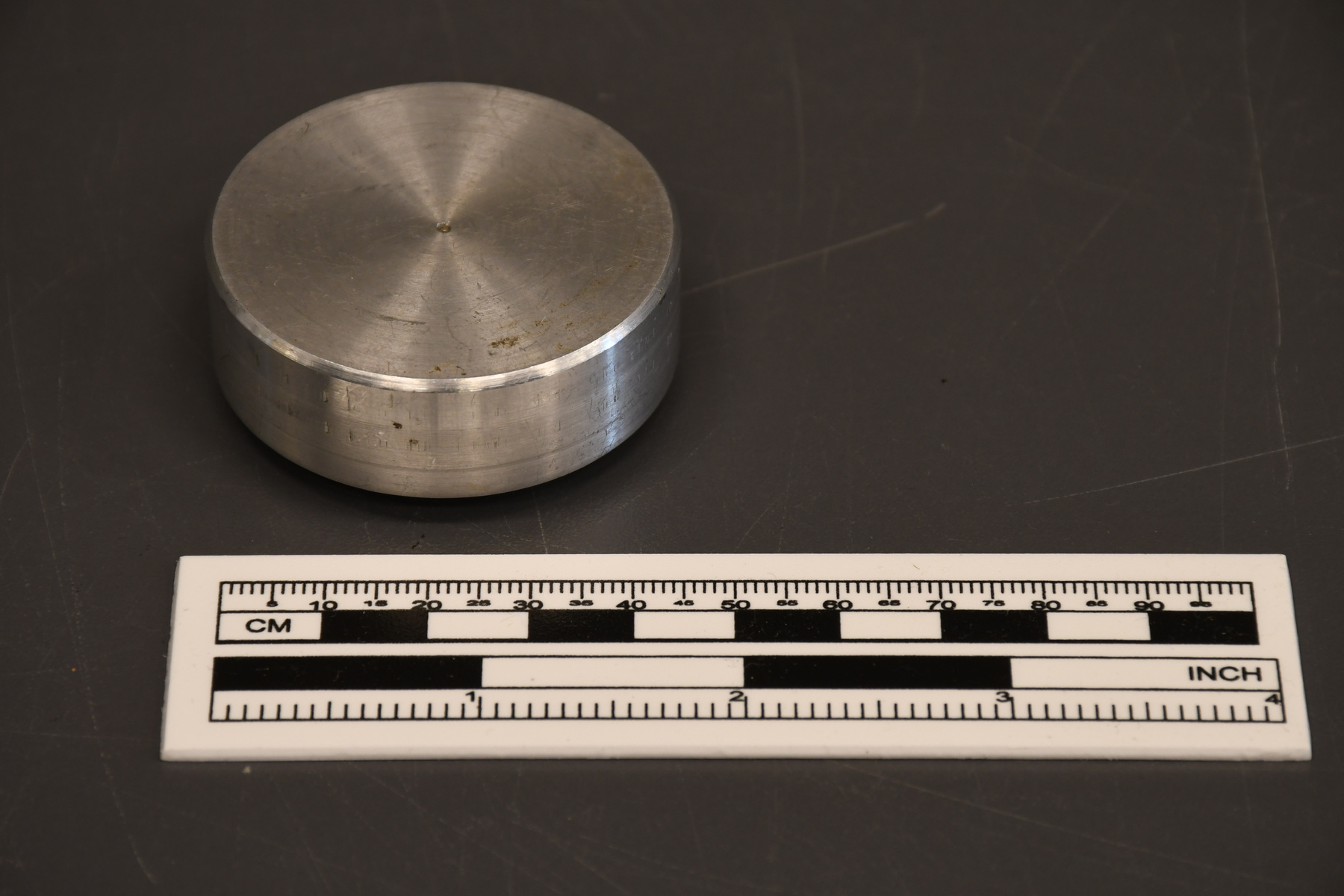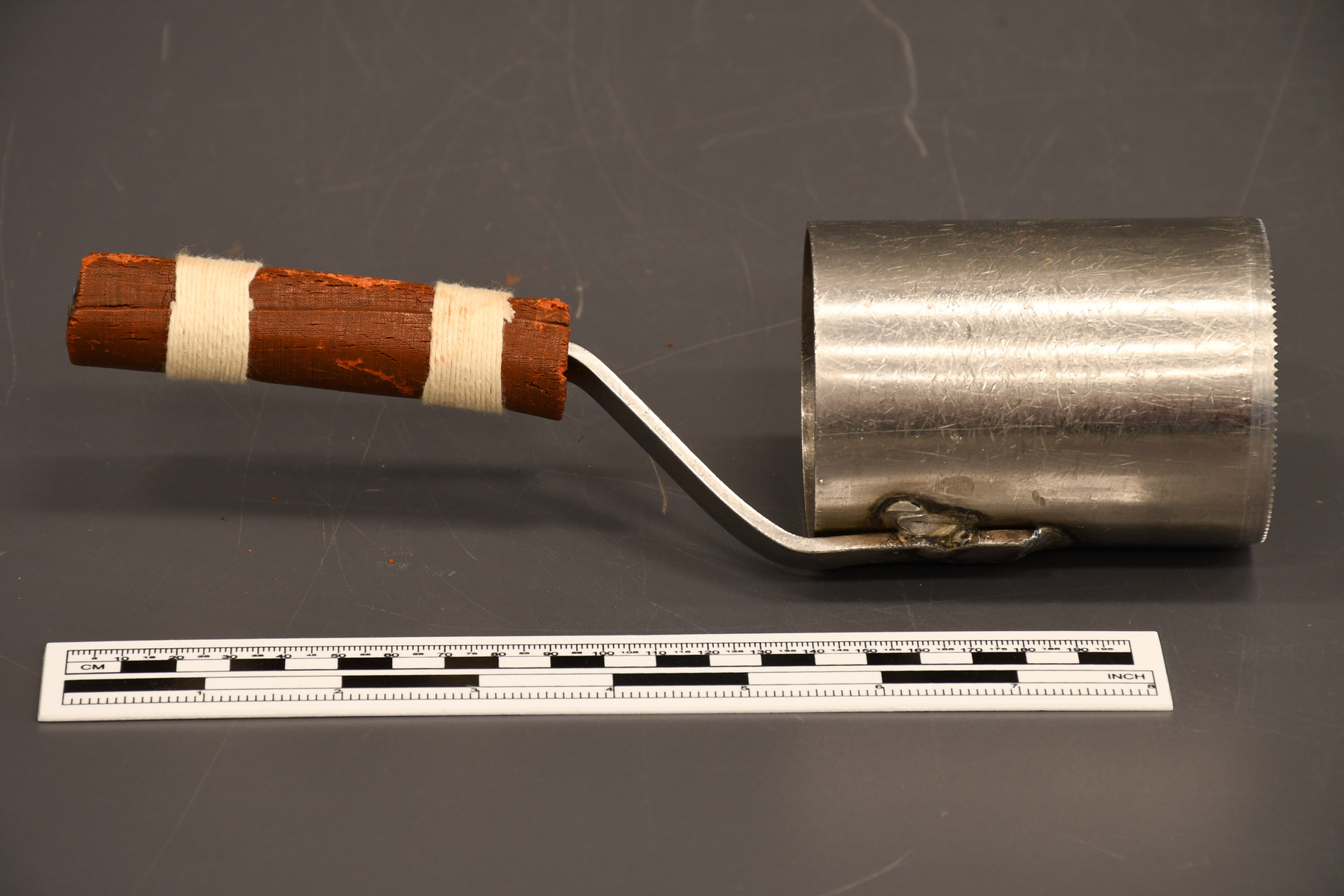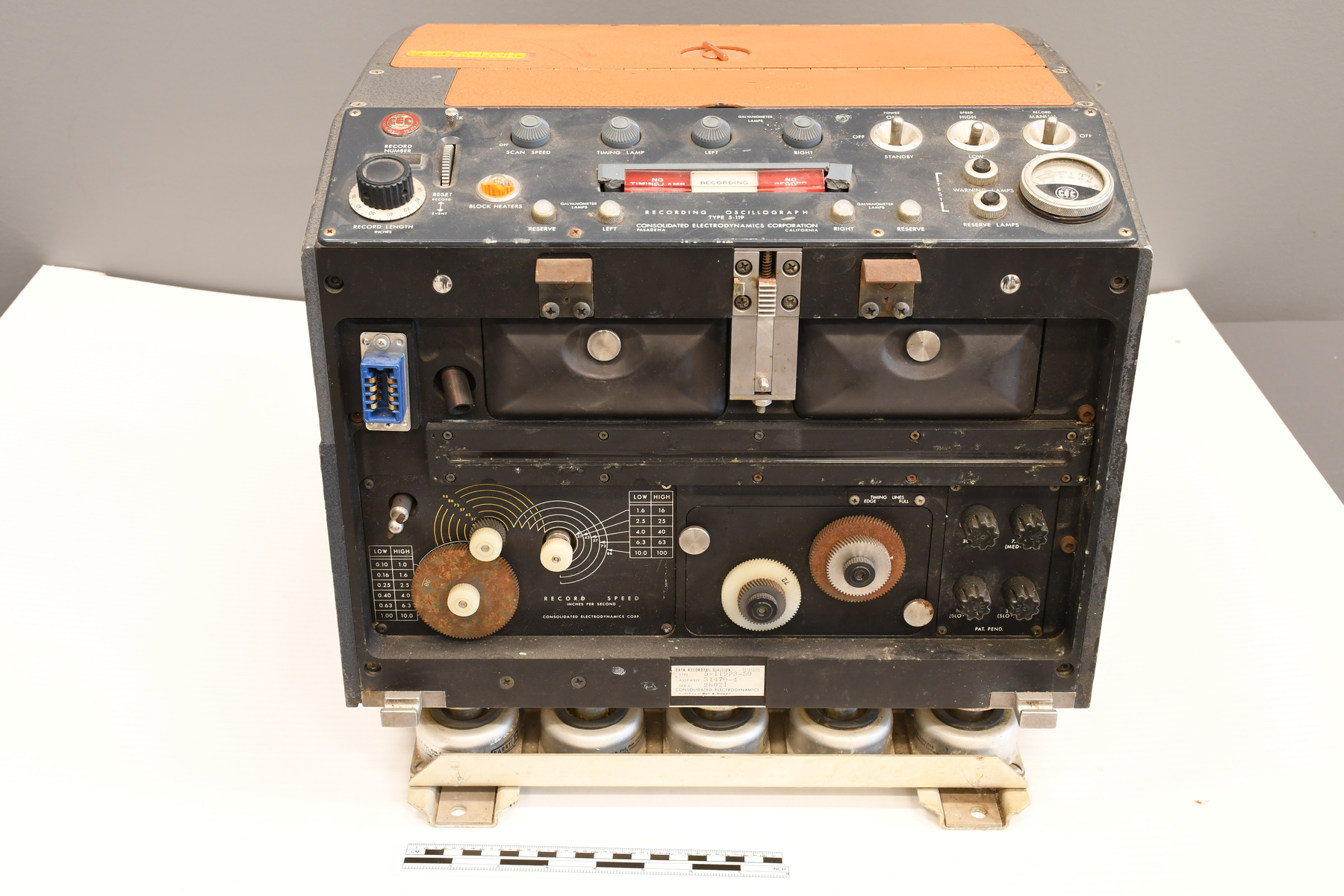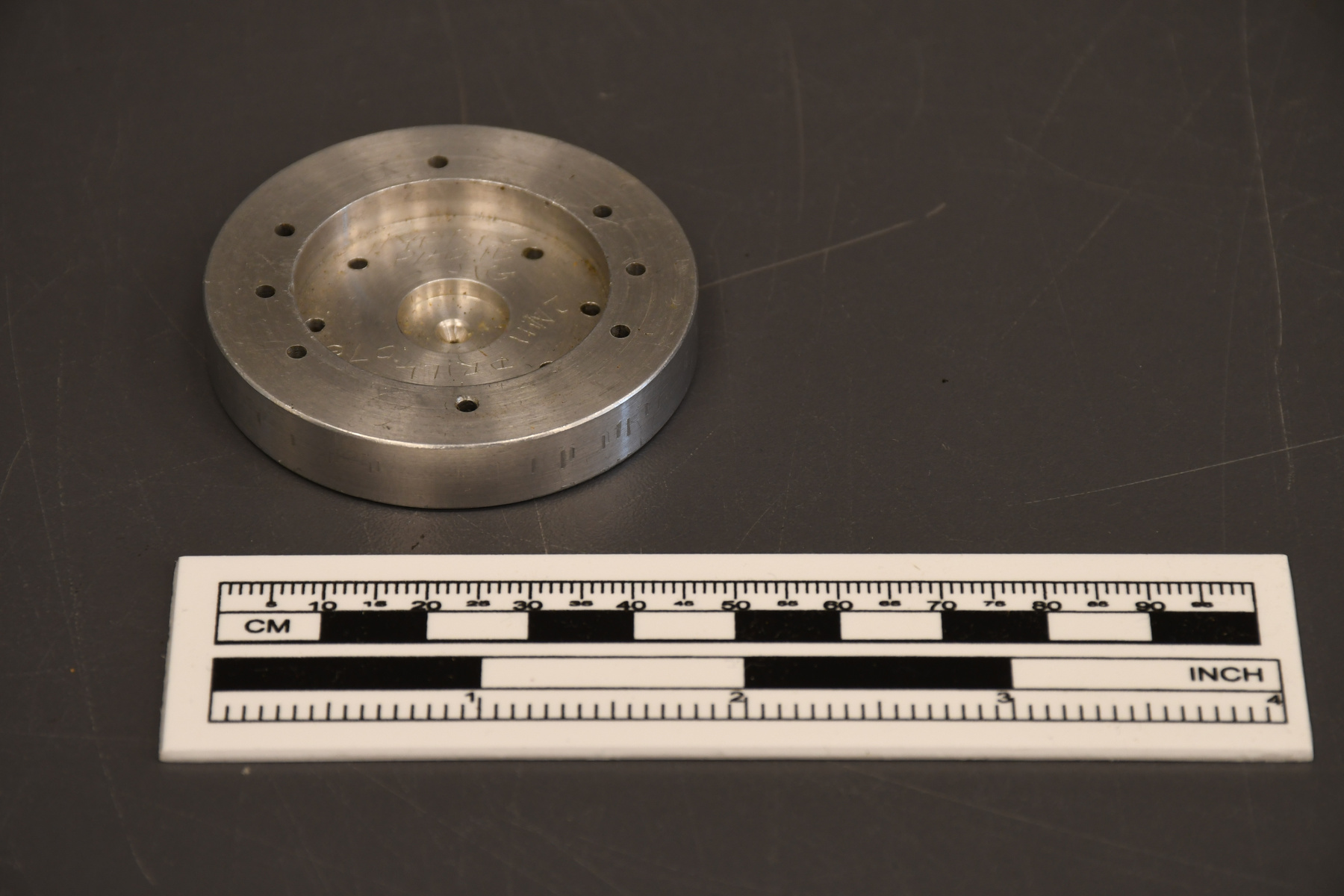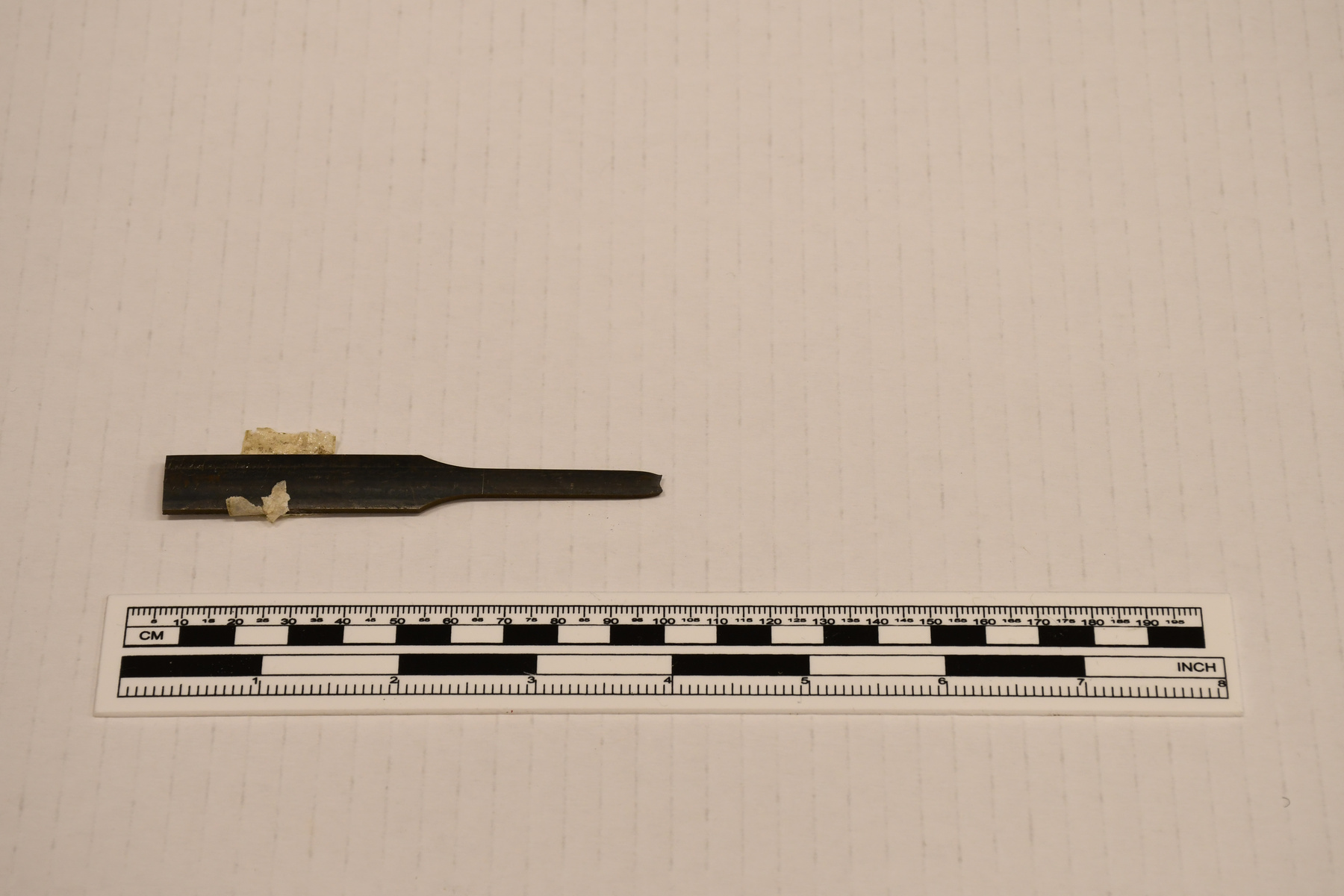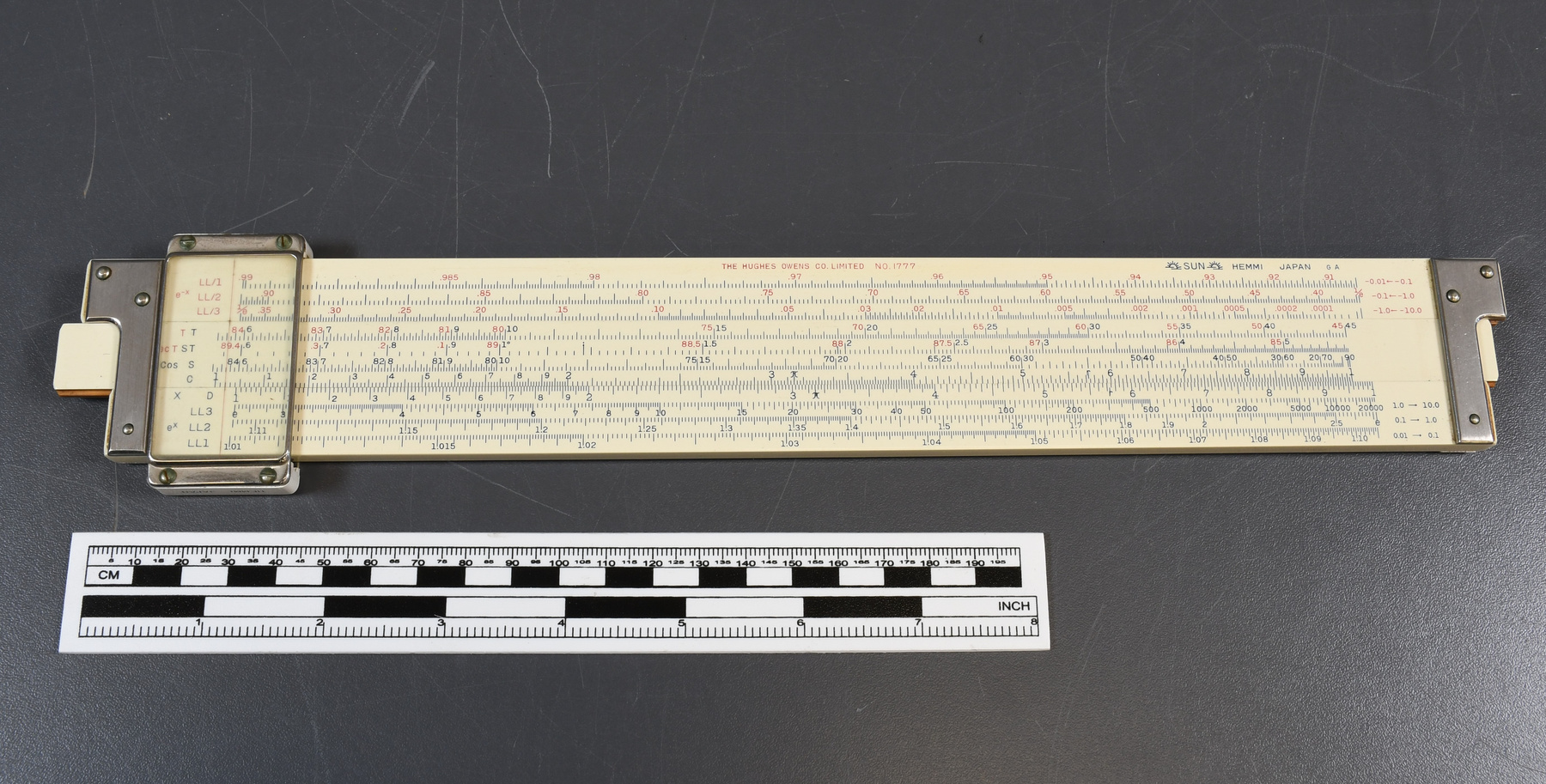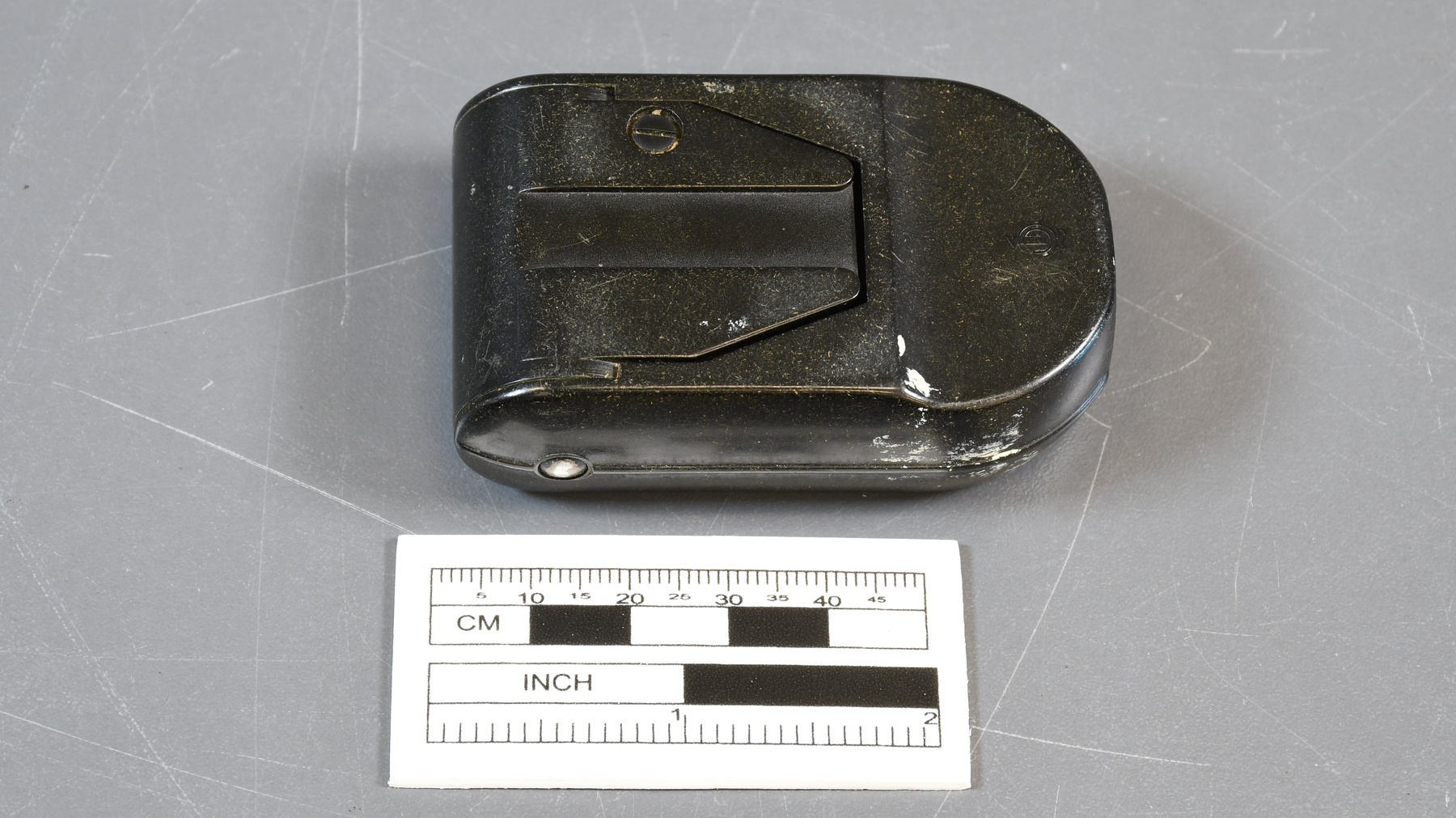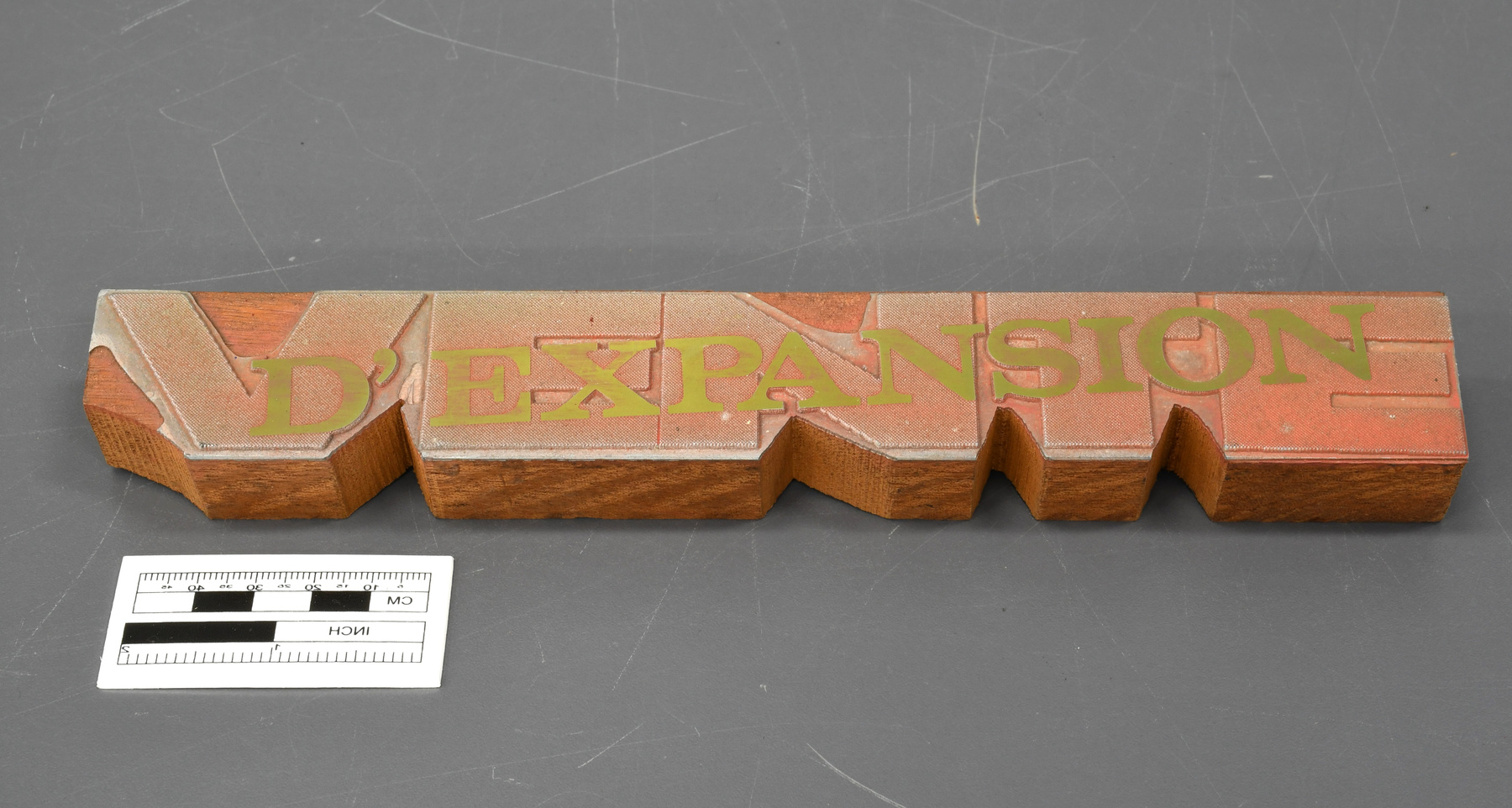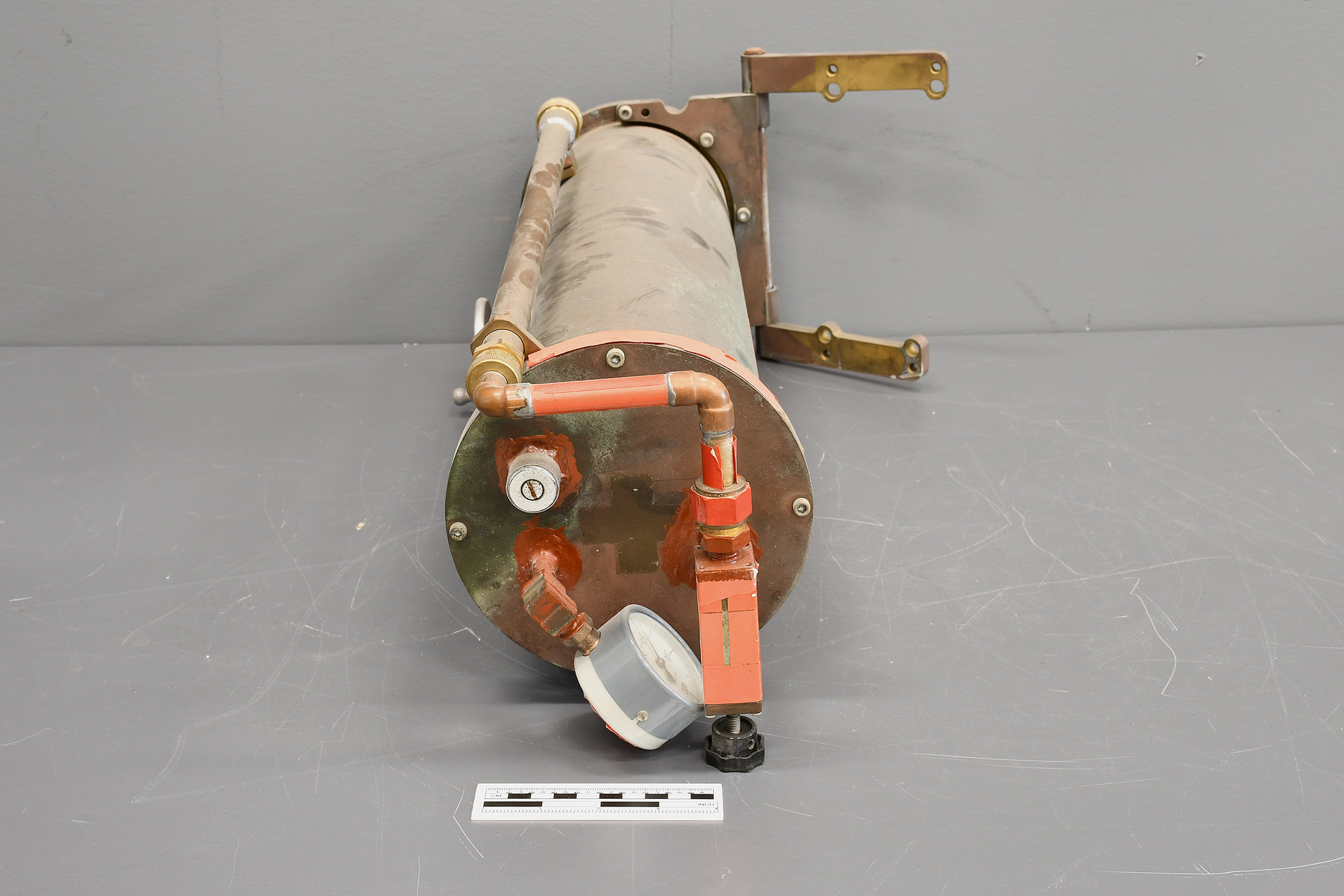Chamber, vacuum
Use this image
Can I reuse this image without permission? Yes
Object images on the Ingenium Collection’s portal have the following Creative Commons license:
Copyright Ingenium / CC BY-NC-ND (Attribution-NonCommercial 4.0 International (CC BY-NC 4.0)
ATTRIBUTE THIS IMAGE
Ingenium,
2008.1885.003
Permalink:
Ingenium is releasing this image under the Creative Commons licensing framework, and encourages downloading and reuse for non-commercial purposes. Please acknowledge Ingenium and cite the artifact number.
DOWNLOAD IMAGEPURCHASE THIS IMAGE
This image is free for non-commercial use.
For commercial use, please consult our Reproduction Fees and contact us to purchase the image.
- OBJECT TYPE
- optical comparator/spectrograph
- DATE
- 1967
- ARTIFACT NUMBER
- 2008.1885.003
- MANUFACTURER
- Unknown
- MODEL
- Unknown
- LOCATION
- Unknown
More Information
General Information
- Serial #
- N/A
- Part Number
- 3
- Total Parts
- 4
- AKA
- N/A
- Patents
- N/A
- General Description
- An artifact comprised of metal, glass and synthetic elements/Un objet fait avec du matériel en métal, en verre et des éléments synthétiques.
Dimensions
Note: These reflect the general size for storage and are not necessarily representative of the object's true dimensions.
- Length
- 61.5 cm
- Width
- 30.4 cm
- Height
- 22.7 cm
- Thickness
- N/A
- Weight
- N/A
- Diameter
- N/A
- Volume
- N/A
Lexicon
- Group
- Chemistry
- Category
- Test-measurement equipment
- Sub-Category
- N/A
Manufacturer
- AKA
- Unknown
- Country
- Unknown
- State/Province
- Unknown
- City
- Unknown
Context
- Country
- Canada
- State/Province
- Ontario
- Period
- 1967-1990s
- Canada
-
The vacuum Ebert spectrograph, developed by Donald A. Ramsey at the NRC, was a central instrument in Canada’s contributions to spectroscopy from approximately 1950 to the 1990s. Lead by Nobel Laureate, Gerhard Herzberg, Canada was a leader in this part of physics in the post WWII era. Using this device, D.A. Ramsey and Barry Lutz were able to confirm that the Kuiper bands of Uranus were made of methane. This finding had eluded scientists since the early days of astrophysics. Ramsey, a gifted experimenter, was able to produce this extremely high-resolution spectrograph, in order to determine the origins of the bands in the laboratory. The laboratory findings were compared with Lutz’s observations and measurements of the Uranus bands. The measurements were based on observations taken at the Mount Hamilton Station of the Lick Observatory, California. Le spectrographe Ebert avec une pression à vide était conçu au NRC par Donald A. Ramsey. L'instrument était primordial pour que le Canada puisse contribuer au domaine de spectroscopie pour plus de quarante ans entre 1950 et les années 1990s. La recherche était menée par Gerhard Herzberg qui était un lauréat pour le prix Nobel. Canada est rapidement devenu le meneur dans ce domaine de la physique après la deuxième Guerre Mondial avec Herzberg en charge. M. Ramsey et Barry Lutz ont réussit à confirmer que les bandes Kuipers de l'Uranus sont faits en méthane en utilisant cette machine. La découverte échappait aux scientifiques depuis l'enfance de l'astrophysique. Ramsey était capable de produire ce spectrographe à haute résolution pour déterminer l'origine des bandes au laboratoire. Le scientifique a pu comparer ces résultats avec ceux de Lutz. Les deux séries de mesurément étaient pris à la station de Mont Hamilton a l'observatoire Lick en Californie. - Function
-
This artifact functioned as an enclosure. It was used to fabricate a low-pressure environment by extracting air and other gases for the Ramsay spectrograph. Cet artefact était utilisé comme un enclos pour fabriquer un environnement de pression à vide pour le spectrographe Ramsay. Une extraction d'air et d'autres gaz avec cette chambre était nécessaire pour accomplir les tâches du spectrographe. - Technical
-
This type of spectrograph dates back to the work of Hermann Ebert in 1889. He developed a spectrometer that consisted of an entrance slit, a single concave spherical mirror, a diffraction grating, and a small photographic plate in the plane of the entrance slit. This artifact is a Ramsey spectrograph, a 33-meter multiple-path cell, that produced spectra of the highest resolution at the time. The main body of this spectrograph was made by Fleck Industries before being installed at the NRC. Despite difficult struggles with leaks in the early construction phase of the optical components, large leak detectors (as big as fridges at the time) were installed and used to locate and fix the leaks. The resultant vacuum conditions allowed for much longer exposures and more precise images. This instrument was also a success due to its optics. The initial resolution of the instrument was not as good as expected, and a new mirror had to be ground and installed. The resolution improved significantly. There were also two gratings in this model, one high and the other low resolution. Ce genre de spectrographe est inspiré par le travail de Hermann Ebert en 1889. Il a développé un spectromètre qui possédait une fente d'entrée, un miroir concave et sphérique, un réseau de diffraction et une plaque photographique située sur le plan de la fente d'entrée. Cet artefact est un spectrographe Ramsey qui possède un trajet-multiple de plus de trente-trois mètres qui produisaient une résolution de la plus haute qualité de sa génération. Le corps du spectrographe était fabriqué par Fleck Industries. Malgré les fuites au début de la phase de construction des composantes optiques, l'installation des détecteurs de fuites installer par la suite ont réussi à trouver et arrêter le déluge. Les conditions après l'installation a construit des conditions de pression à vide qui permettait à la machine de développer des images plus précises avec une exposition prolongée. L'instrument était aussi favori grâce à ces composantes optiques. La résolution initiale n'était pas une haute gamme et donc un nouveau miroir a dû être dépoli et installer. Ceci a augmenté la résolution a un niveau requis. Il y avait aussi deux genres de réseau qui accompagnaient ce modèle qui permettait à une résolution base ou celui qui apportait une résolution plus augmentée. - Area Notes
-
Unknown
Details
- Markings
- On the pressure gauge/Sur la jauge de pression: "[0-760]/VACUUM/mm, Hg/BUDENBERG".
- Missing
- Seems complete/L’objet semble complet.
- Finish
- A tube-shaped object that is made of a brown coloured metal. It has two hinged feet made of the same material that can pivot underneath its body. These feet are located along its back. The front of the artifact has a pressure gauge with glass lens. Behinds the lens is a white scale with black lettering. A pipe is located near the bottom of the gauge. It has a black synthetic knob on its top. The tube runs along the side of the artifact and is made of a brass coloured metal. The tube has an open end that is threaded. A flat silver disc is located on the top of the artifact. This disc has a handle made of the same material. Turning the disc allows for a large metal rail to exit the from the open end of the artifact. Un artefact qui est fait en forme de tuyau. Il est construit avec un métal de couleur brun. L'objet possède des pieds en métal qui peuvent pivoter en dessous du corps de l'objet grâce à des charnières faits avec le même matériel. Sur la face de l'objet il y a une jauge de pression qui a une échelle avec du lettrage noire protéger par un écran en vitre. Un tuyau est visible à côté de la jauge. Le tuyau est fait en métal de couleur laiton et a un bouton synthétique de couleur noire. Le tuyau traverse le côté de l'artefact et termine avec un trou fileté. Un disque est visible sur le dessus de l'artefact. Le disque et fait en métal et a une manche est faite de la même façon sur sa tête. En tournant la manche un rail en métal sort du milieu de l'objet.
- Decoration
- N/A
CITE THIS OBJECT
If you choose to share our information about this collection object, please cite:
Unknown Manufacturer, Chamber, vacuum, circa 1967, Artifact no. 2008.1885, Ingenium – Canada’s Museums of Science and Innovation, http://collections.ingeniumcanada.org/en/id/2008.1885.003/
FEEDBACK
Submit a question or comment about this artifact.
More Like This
